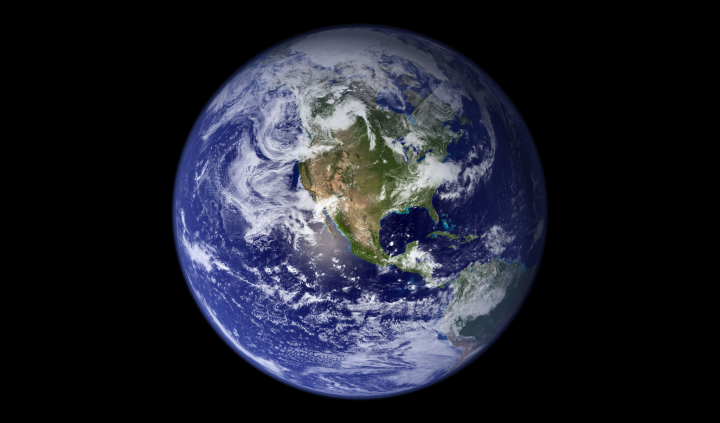I know it’s not correct to use an interrogative phrase in a title, but there is no other way to open this discussion. We need to open our minds by asking ourselves “How long did it take for human beings to be in capacity to take this photo?”
A few weeks ago, Tony (Pressenza co-director) sent a document written by Silvia Swinden called “The Space of Representation” (see link PDF). This type of research focuses on one theme. The Space of Representation is a concept developed by Silo that explains that the consciousness works through images located on a mental space in our minds. Put briefly, if you move something (an image) within your space of representation your perception of this object, and perhaps of your life, will change. When Michelangelo, for example, in his painting “The Creation of Adam” placed God at the same level as Adam (human beings), this reflected the transformed vision of the world that the Renaissance offered.
 There are plenty of moments like this in history when old landscapes are replaced by new ones. In this instance, we could say the Space of Representation in humans expanded and gained in “resolution.” Remember when it was believed the Earth was flat? That was the reality of the time.
There are plenty of moments like this in history when old landscapes are replaced by new ones. In this instance, we could say the Space of Representation in humans expanded and gained in “resolution.” Remember when it was believed the Earth was flat? That was the reality of the time.
After finishing Silvia’s study, I was listening to the Triangulation podcast. It is usually hosted by Leo Laporte, but this time the host was Fr. Robert Ballecer, a Jesuit blogger and podcaster. His guest was Michael Summers, author of “Exoplanets: Diamond Worlds, Super Earths, Pulsar Planets, and the New Search for Life Beyond Our Solar System.” Mr. Summers doesn’t directly address the Space of Representation, but he describes very well the limits of our understanding, capturing how some things or experiences don’t yet fit within our space of representation. The study of life beyond our solar system has captured our imagination for decades and has definitely helped us to discover new, internal spaces.
Silvia’s contribution should be studied within the School and by all middle schoolers to make sure young adults have an understanding of the evolution of the consciousness and of the world in which they are living (not just historical facts that describe the barbarous violence carried out by humanity throughout the ages). Everything that we see and understand exists within our Space of Representation, which has been developed over millennia. There isn’t any “reality” that exists separately from the dynamic, ongoing construction and interpretation that occurs within our own consciousness.
So now let’s go back to our question: “How long did it take to take this photo?” This famous “blue marble” shot represents the first photograph in which the Earth is in full view. The picture was taken on December 7, 1972, as the Apollo 17 crew left Earth’s orbit for the moon. It took the human process millennia to get to the point of being able to “see” this magical picture. This photo marks a moment in human evolution, a demonstration of what human beings are capable of for the wellbeing of everyone.
Thanks to Silvia, Michael and everyone who is working to advance human understanding and development. As Silo wrote in The Internal Landscape: “I will tell you the meaning of your life here: it is to humanize the earth. And what does it mean to humanize the earth? It is to surpass pain and suffering; it is to learn without limits; it is to love the reality you build.”










